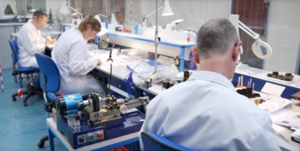Standard, off-the-shelf lenses designed for imaging applications perform well in temperature-controlled environments or where temperatures vary only slightly. However, in certain security, defence, industrial and space applications where imaging systems are prone to extreme or wide temperature variations, the use of athermalised lenses is key to minimising temperature dependent performance changes.
For stable results
It is important to consider the different materials in a lens and how they behave, right from the design stage. The reason for this is that the different materials in a lens expand and contract at different rates. There is no other way to ensure that a lens remains in focus and performs well over its entire operating temperature range. Developing an athermalised lens design is particularly critical in the infrared (8 - 14 micron) wavelength range, where the thermal expansion coefficient of most infrared materials is orders of magnitude higher than that of visible glasses, causing large changes in refractive index. Resolve Optics has experience in developing passively and mechanically athermalised lenses that provide stable imaging performance in applications with wide temperature variations (-30°C to +60°C) or extreme temperatures (up to 950⁰C).
All athermalised lenses manufactured by Resolve Optics are qualified using state-of-the-art automated modulation transfer function (MTF) testing equipment. If required, athermalised lenses can be further qualified using the company's in-house vibration and shock testing facility.



























